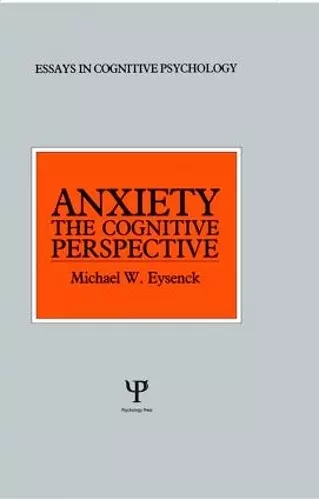Anxiety
The Cognitive Perspective
Format:Hardback
Publisher:Taylor & Francis Ltd
Published:26th Jun '92
Currently unavailable, and unfortunately no date known when it will be back
This hardback is available in another edition too:
- Paperback£56.99(9781138876927)

Correction notice: In chapter 4, on pages 70-71, Christos Halkiopoulos should have been credited for his role in the design and execution of the experiment discussed in Eysenck, M. W. (1991 a). Trait anxiety and cognition. In C. D. Spielberger, I. G. Sarason, Z. Kulczar, and J. Van Heck (Eds.), Stress and Emotion, Vol. 14. London: Hemisphere.
Theorists are increasingly arguing that it is fruitful to approach anxiety from the cognitive perspective, and the empirical evidence supports that contention. The cognitive perspective is also adopted in this book, but the approach represents a development and extension of earlier ones. For example, most previous theories and research have been based on anxiety either in clinical or in normal groups. In contrast, one of the central themes of this book is that there are great advantages to be gained from a joint consideration of clinical and normal anxiety.
Another theme of this book is that it is of major importance to establish whether or not there is a cognitive vulnerability factor which is associated with at least some forms of clinical anxiety. It is argued (with supporting evidence) that there is a latent cognitive vulnerability factor for generalized anxiety disorder which manifests itself under stressful conditions. This vulnerability factor is characterized by hypervigilance, and is found predominantly in normals high in the personality dimension of trait anxiety.
The scope of the book extends to the effects of anxiety on performance and to the phenomenon of worry, which is regarded as the cognitive component of anxiety. In both cases, a new theoretical framework is presented.
Despite having such a lengthy history to contend with, this book manages to break new ground in a number of directions...Eysenck explores the relationship between normal and clinical anxiety in considerable detail and rounds it off by presenting his own model of why some individuals are vulnerable to becoming clinically anxious...Emerging from an intelligent and considered review [of his research] is Eysenck's suggestion that some individuals are `hypervigilant to threat in their environment'. - Times Higher Education Supplement, 1993; Review by Tim Dalgleish
ISBN: 9780863770715
Dimensions: unknown
Weight: 540g
208 pages